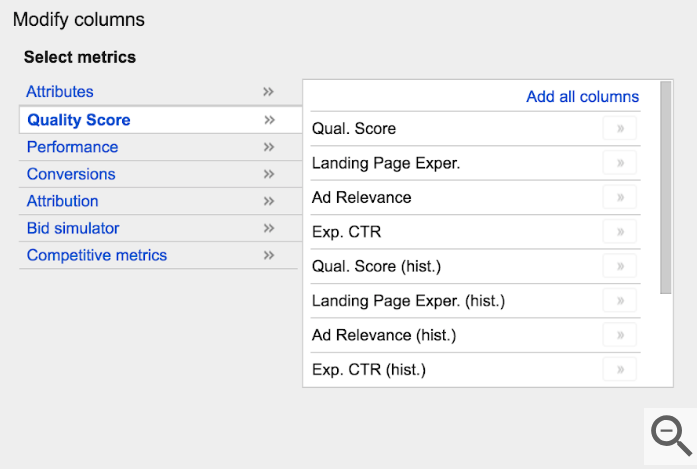- Pay-per-click, PPC, traffic creates about 50% more lead conversion than organic traffic.
- The 3 paid ads at the top of the search engine results page (SERPS) get 46% of the clicks for the entire page.
- 65% of the clicks made on PPC ads are by customers who make a purchase.
With advances in keyword research, audience targeting, and the introduction of AI into the bidding process, it’s never been a better time to start PPC campaigns. But even with stats like the ones above, many marketers and businesses are reticent to get into PPC because it just seems so…complicated. One of the things we’ve found when auditing and working with clients on their existing PPC campaigns is that they’re not doing it wrong, exactly, they’re just not in the know about all of the fantastic tools that Google Ads has created to help businesses actually succeed with their PPC campaigns.
One of the biggest red flags we see? Poor ad quality scores. Today we’re going to hop in and learn a bit about ad quality scores and how they can take your PPC campaigns from meh to MARVELOUS!
Using the Ad Quality Score
With PPC ads you’re playing for clicks not for impressions which means 1000 people could see your add but if only 10 click, you’re only paying for those 10 clicks. So if your ad is displayed on the SERPs (search engine results page) but a user doesn’t click on it, you don’t have to pay for it. However, just because someone clicks on your ad doesn’t mean that they will end up buying your product or signing up to your email list. They could end up leaving your landing page as soon as they get to it, in which case you’ve just lost the money you paid for that click without getting real results.
The Ad Quality Score will help provide you with an accurate assessment of your ads, the keywords you use, and the landing pages you link to by assigning a rating of the quality and relevance of the ad. The score you receive also impacts your ranking. This is because Google determines the ad rank (which determines how often it is displayed) on the Ad Quality Score multiplied by the CPC (cost per click).
The Ad Quality Score is based on a 1 to 10 ranking, 1 representing the lowest possible ROI and 10 representing the highest possible ROI. If your ad is rated a 10, it means you’re paying the lowest possible CPC.
Factors That Determine Your Ad Quality Score
The following are the factors used to determine the Ad Quality Score:
- CTR – The CTR (click-through-rate) is the rate at which users click on your ad when it’s displayed. A high CTR tells Google that your ad must be relevant to the keywords you’re using because people are clicking on your ad at a high rate when they see it come up on their SERP. If the CTR is low, it means that there are issues with your ad, whether it’s a poor headline, a poor description, or the poor use of keywords.
- Landing page experience – When a user clicks on an ad, it should take them to a landing page. User experience is a big part of your score. A landing page should have matching keywords and a high conversion rate in order to obtain a high user experience rating. There are technical elements as well– for example, landing pages need to mobile-friendly and must load quickly.

Improving Your Ad Quality Score
One of the biggest benefits of the Ad Quality Score is that it allows you to see what ads are working and what ads aren’t. You can then make adjustments to your ads to improve your Ad Quality Score. Not only will you increase your ROI, but you’ll also increase your click-through-rate and ad conversions (leading to a lower cost per conversion rate, which directly contributes to your ROI). Keeping that in mind, the following are a few ways that you can improve your Ad Quality Score:
- Do keyword research – Make sure that the keywords you choose are relevant to your ads. Additionally, find higher quality keywords that are more specific and more competitive, such as long-tail keywords. This will make it easier to target users who are more likely to click on your ad.
- Optimize your ads and landing pages – Make sure to you the keyword you’ve chosen in the titles and descriptions of both your ads and your landing pages.
- Analyze your landing pages – Look at metrics such as conversion rates versus page visits as well as bounce rates to determine how relevant your landing pages are to the ads they are linked from and how effective your content is. High bounce rates mean visitors do not think your landing pages are relevant to the ad, while low conversion rates in general means that the copy isn’t convincing.
Pay attention to your Ad Quality Score to ensure that your Google AdWords ads are performing well. Improving your score will help improve the cost-effectiveness of your ads.
-FINAL(01-00)-White&Blue-01.svg)





